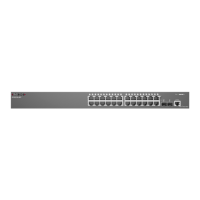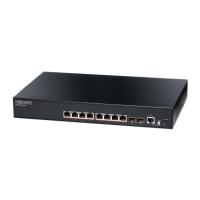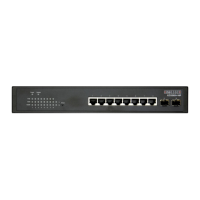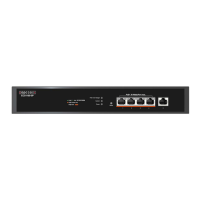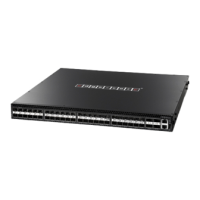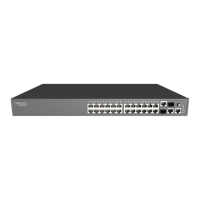Chapter 4
| System Management Commands
Switch Clustering
– 153 –
Using Switch Clustering
◆
A switch cluster has a primary unit called the “Commander” which is used to
manage all other “Member” switches in the cluster. The management station
can use either Telnet or the web interface to communicate directly with the
Commander through its IP address, and then use the Commander to manage
the Member switches through the cluster’s “internal” IP addresses.
◆
Clustered switches must be in the same Ethernet broadcast domain. In other
words, clustering only functions for switches which can pass information
between the Commander and potential Candidates or active Members
through VLAN 4093.
◆
Once a switch has been configured to be a cluster Commander, it automatically
discovers other cluster-enabled switches in the network. These “Candidate”
switches only become cluster Members when manually selected by the
administrator through the management station.
◆
The cluster VLAN 4093 is not configured by default. Before using clustering,
take the following actions to set up this VLAN:
1.
Create VLAN 4093 (see “Editing VLAN Groups” on page 459).
2.
Add the participating ports to this VLAN (see “Configuring VLAN Interfaces”
on page 461), and set them to hybrid mode, tagged members, PVID = 1,
and acceptable frame type = all.
Note:
Cluster Member switches can be managed either through a Telnet
connection to the Commander, or through a web management connection to the
Commander. When using a console connection, from the Commander CLI prompt,
use the rcommand to connect to the Member switch.
cluster
This command enables clustering on the switch. Use the
no
form to disable
clustering.
Syntax
[
no
]
cluster
show cluster Displays the switch clustering status PE
show cluster members Displays current cluster Members PE
show cluster candidates Displays current cluster Candidates in the network PE
Table 27: Switch Cluster Commands (Continued)
Command Function Mode

